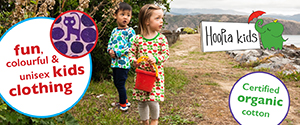buggies, prams & strollers
Your buggy, pram or stroller can be one of the most expensive items you will purchase for your baby. Make sure you consider how and when you will be using your buggy before you buy one.
Things you might need to consider are:
To see all of the buggies we have featured, have a look at our move archives.
Safety is paramount when purchasing a buggy for your baby. Please take the time to read the information from Consumer NZ and the Ministry of Consumer Affairs below before making the decision as to which buggy you will purchase.
Consumer NZ is an independent, non-profit organisation established in 1959 with the sole aim of getting New Zealand consumers a fairer deal.
Consumer NZ have published the following free resources to help you decide what buggy to buy:
We strongly recommend printing a copy of these resources for you to reference when researching buggy options.
Babies and small children spend a lot of time in prams and strollers. Make sure you buy a safe product and use it safely.
Remember
Check that:
Do:
Do not:
Download a pdf version of this article from the Ministry of Consumer Affairs.
Things you might need to consider are:
- Will you be running or going 'off-road' with your buggy?
- Do you expect your baby to be able to sleep when out and about in your buggy?
- Does the buggy have enough room to carry basic necessities (such as your nappy bag)?
- Will you be taking the buggy on public transport?
- Will the buggy fit in the boot of your car?
- Will you be able to lift the weight of the buggy easily?
To see all of the buggies we have featured, have a look at our move archives.
Safety is paramount when purchasing a buggy for your baby. Please take the time to read the information from Consumer NZ and the Ministry of Consumer Affairs below before making the decision as to which buggy you will purchase.
Information from Consumer NZ
Baby Buggies
Links provided with the permission of Consumer NZConsumer NZ is an independent, non-profit organisation established in 1959 with the sole aim of getting New Zealand consumers a fairer deal.
Consumer NZ have published the following free resources to help you decide what buggy to buy:
We strongly recommend printing a copy of these resources for you to reference when researching buggy options.
Information from the Ministry of Consumer Affairs
Prams and Strollers
Ministry of Consumer Affairs, June 2005Babies and small children spend a lot of time in prams and strollers. Make sure you buy a safe product and use it safely.
Remember
- The safest child is a supervised child.
- A pram is for getting about with your baby. For a sleeping child a cot or bassinet is best.
Buying a pram or stroller
Babies and small children spend a lot of time in prams and strollers. Make sure you make the best choice.Check that:
- the pram or stroller meets a standard – the most common is AS/NZS 2088:2000
- there are two locking devices to prevent folding
- the brakes work properly
- instructions are included and you follow them
- the harness provided will firmly restrain your child - a five point harness is best
- there are no sharp edges or open tubes
- removable pieces can be fastened securely
- fabric and linings fit snugly and do not contain gaps or hidden pockets that baby can get trapped in.
Do’s and Don’ts
Do:
- Follow the manufacturer’s instructions carefully.
- Properly secure all fastenings after washing fabric or after changing seat position.
- Check that the brakes work well and that they are on when pram is not moving.
- Make sure both locking devices (which prevent the pram folding) are in place before putting your child in the pram - there should always be at least two locking devices.
- Make sure the harness straps fit firmly.
- Make sure you use the harness all the time.
Do not:
- Do not hang shopping over handles - this makes the pram unstable and it could tip over.
- Do not leave fastenings undone while pram is in use - you may have created a gap that your child could fall through or get stuck in.
- Do not allow your child to climb into the stroller unassisted, or play on it - it could tip over.
- Do not use a pram on stairs or escalators - use lifts whenever possible.
Download a pdf version of this article from the Ministry of Consumer Affairs.
advertisements






| 1. 10 candles to light your fire - how much fun can you fit on your cake?! 2. Hoopla kids - Scrumptious looking gears to brighten your kids' wardrobes 3. How to dress your child for a special occasion 4. Fruity pineapple flamingo party - Sweet, bright and sunny 5. Spanish Baby Bites- European sleeping bags that are unique and adorable |
|
|
| 1. Upcycling baby clothes - Turn your most treasured items into something that lasts 2. Grace's ballet party - celebrate your tiny dancer 3. After the birth - What to expect when you've welcomed your bundle of joy 4. Lalaloopsy party - How to craft your party around a centrepiece 5. 10 candles to light your fire - how much fun can you fit on your cake?! |
|
|
| 1. Scone peapods - the cutest and most delicious vegetables around 2. Lalaloopsy party - How to craft your party around a centrepiece 3. Superkids Scroggin- An innovative lunchbox idea 4. Jeffrey's Lego Party - totally Legotastic 5. Best indoor playsets - Unbelievable fun most of us can only dream of! |





